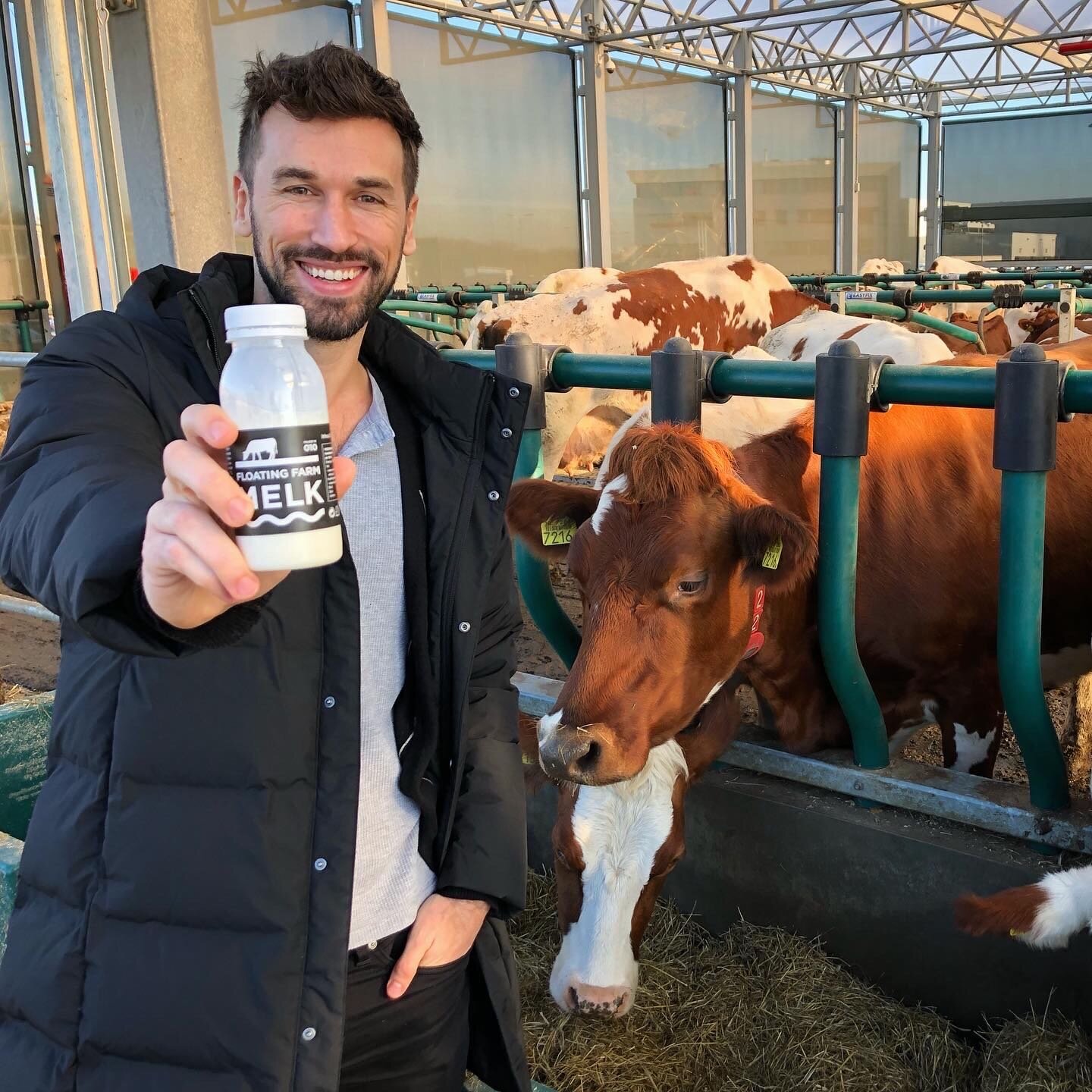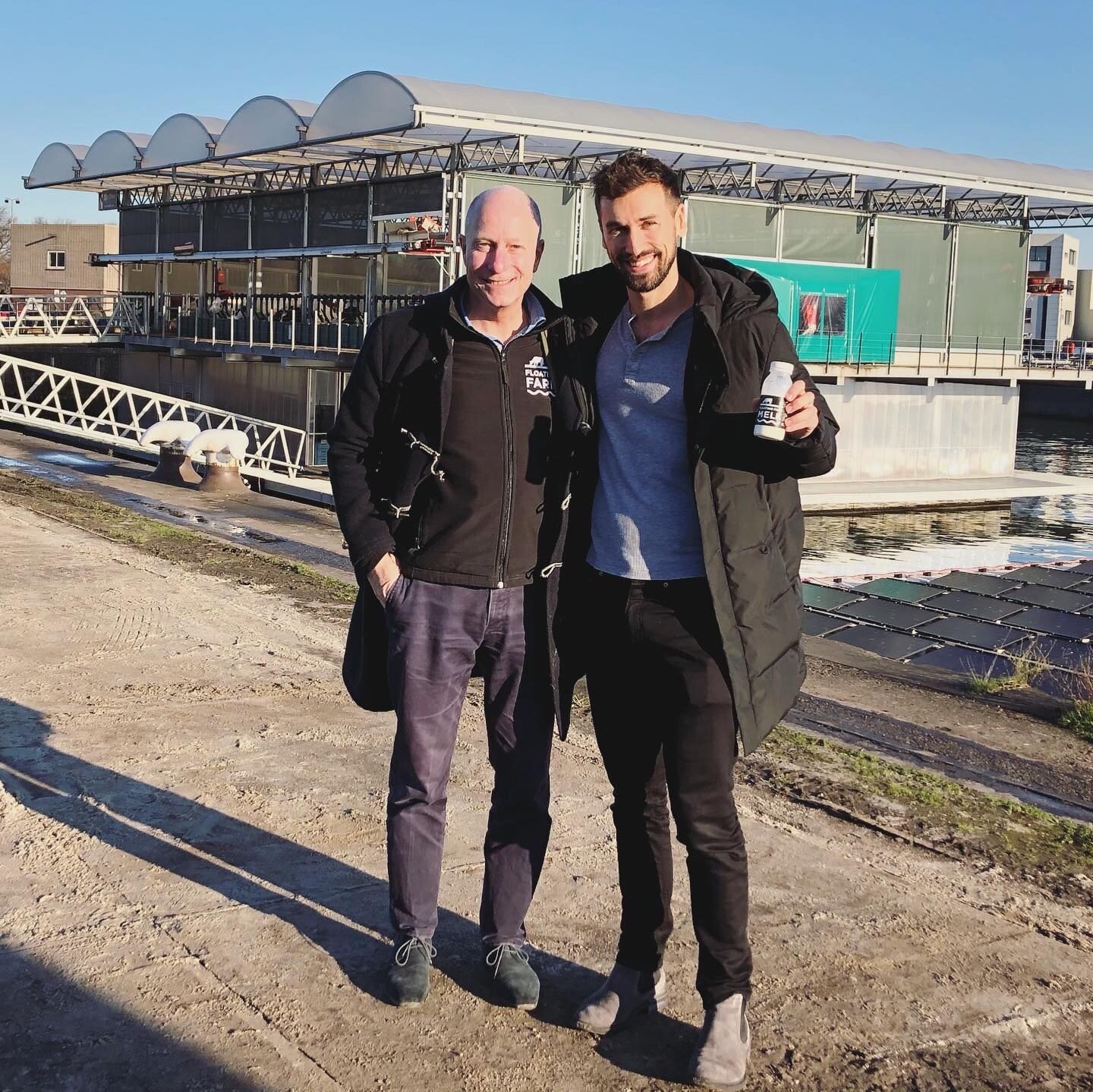Aug 24, 2021
Building The World’s First Floating Farm In The Netherlands

Image sourced from the Floating Farm Rotterdam, and designed by the architecture studio Goldsmith
Editor’s note: The following information is derived from an interview Agritecture conducted with Peter Van Wingerden, Founder of the Dutch property development company Beladon and CEO of the Floating Farm Rotterdam.
At Agritecture we often hear from world-class designers envisioning the future of food - whether this be in space, underwater, in the arctic, et cetera.
Several of these ideas have imagined floating agricultural farms as a way to respond to climate change, build flood resilience, and provide urbanized cities with locally-grown produce.
But did you know there’s a real-life floating farm with animals?
The World’s First Floating Farm

Image sourced from the Floating Farm Rotterdam
Since May 2019, a floating farm raising dairy cows has been operating in Rotterdam, Netherlands.
While most urban farms tend to be human-centric and produce vegetables directly for human consumption, this farm is thinking beyond the imaginable to produce dairy on top of waterborne architecture “in a sustainable, innovative, transparent way with animal welfare as top priority.”
To shed light on the extent of this farm’s success, Peter Van Wingerden, Founder of the Dutch property development company Beladon that built this farm, and CEO of the Floating Farm Rotterdam says that “with about 40 cows on the farm, we’re able to produce 320,000 liters of raw milk every year. We split this into pasteurized milk, pasteurized yogurt, and we do sell a little bit of raw milk too - it's allowed in the Netherlands to sell it straight from the farm.”
What Inspired This Idea?
.jpg)
With an engineering background and a passion for technology-driven sustainable food production, Van Wingerden says that he “wanted to produce healthy food close to consumers, reduce long transportation lines and times between production and consumption, and show consumers in a transparent and educational way how healthy food can be produced.”
As for cultivating on the water, he says that “by building on the water, we are climate adaptive. So, no matter how much rain falls or how high sea levels rise, we can always produce healthy food.”
A key part of the design process was to also have a modular building that would be extremely scalable. Van Wingerden highlights that the structure “can go deeper under the water and much higher on top of the water. We can make it as scalable as we want as well. There's plenty of space on the water so that's not an issue. And that goes for many cities.”
In only 2 years since initiating operations, the team at Floating Farm has been able to “prevent food losses, reduce food transport, and improve food quality.”
“Bringing the farm back to the city as part of a clean, livable and conscious city transformation,” explains Van Wingerden.
Meeting The Health & Dietary Needs Of The Cows In A High-Tech Farm

Image sourced from the Floating Farm Rotterdam, and designed by the architecture studio Goldsmith
The Floating Farm has a strong passion for circular farming and delivering the utmost comfort to their cows.
As part of this, Van Wingerden shares that “a large part of the diet of our cows consists of organic waste streams from the city. For example, our cows are fed brewer's grains from a number of Rotterdam breweries, bran from Schiedam windmills, grass from nearby sports fields, and potato peelings from a local processor.”
Additionally, in collaboration with Easyfix, a livestock comfort solutions company, this farm is able to provide their cows with better living conditions. “The beds for the cows are made of flexible and strong materials that can be adjusted to the wishes of the cow. In addition to these cow beds, other Easyfix products are also used to meet all the needs of the cows.” The farm also utilizes robots for automated milking, feeding, and data tracking on the herd.
How Has The Pandemic Impacted Distribution Options?
.jpg)
Since starting operations in 2019, the farm had two sales channels organized: firstly, customers could come directly to the farm to purchase their dairy products, and secondly, the team distributed to various restaurants and retailers throughout the Netherlands - over 23 shops, outlets, and retail stores.
But, with the global pandemic, the team had to adapt and create new distribution channels.
The team shares that “until recently, we were 'court suppliers' to the catering industry and hospitals, among other things. We now sell our products through our own shop at the farms and we bring our products - ordered via the web shop - to various collection points in the city.”
Advantages of this new model include the team getting to be in direct contact with customers. “But that also means we could really use some support” from volunteers.
What’s In Store For The Future?

Image sourced from the Floating Farm Rotterdam, and designed by the architecture studio Goldsmith
Does the future hold more floating farms for cows or other animals? Or is this company looking to slowly make their way into the vegetable industry?
Looking to the future, Van Wingerden says that the team is planning a floating farm for chickens and vegetables. “We will have 7000 chickens to produce 2 million eggs per year, and a 2000 square meter vegetable growth surface where we will produce herbs, leafy greens, etc.”
Additionally, the team is conversing with other cities and countries to build out more floating farms. “Any city that sees the importance of healthy food consumption understands that the best way is to produce this healthy food as close as you can get to the consumers. This will also help create awareness.”
We’re excited to see what the future holds for floating farms and hope to see more of these innovations come to life.
Get started with Agritecture Designer today to make your urban agricultural dreams a reality!

